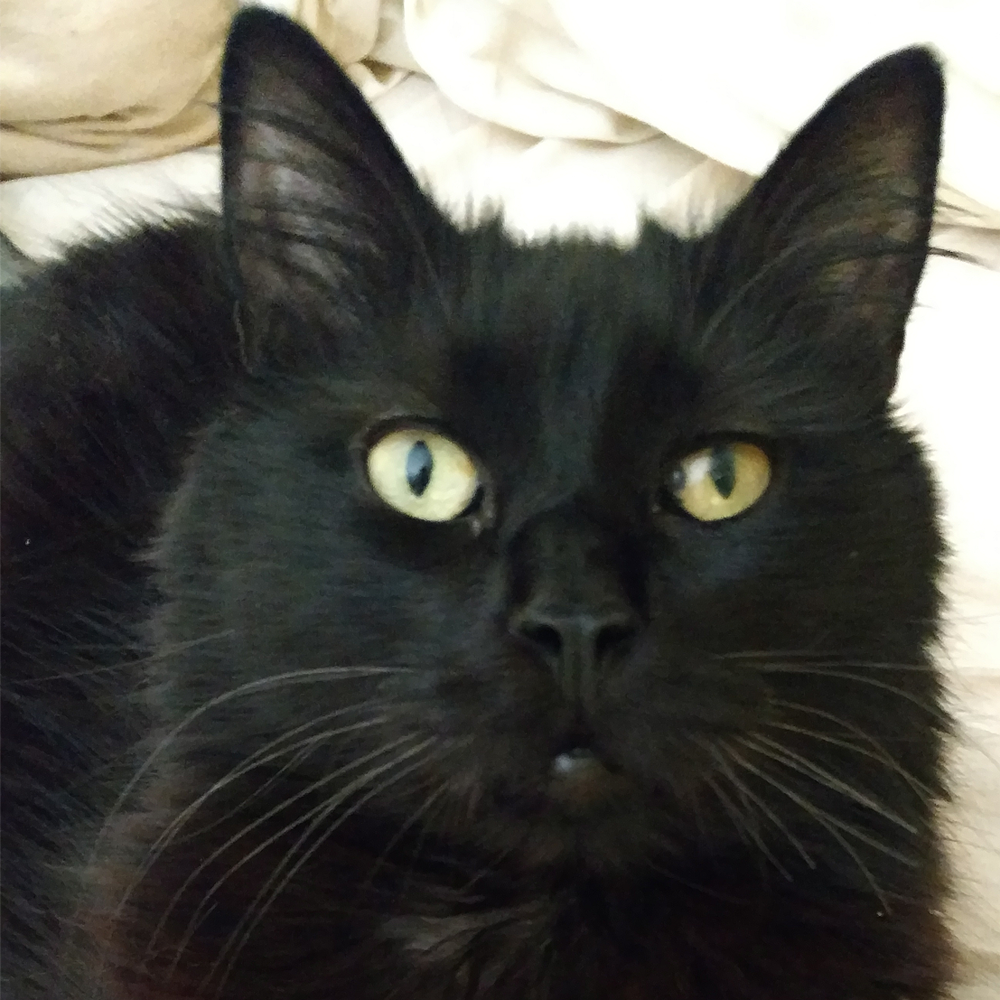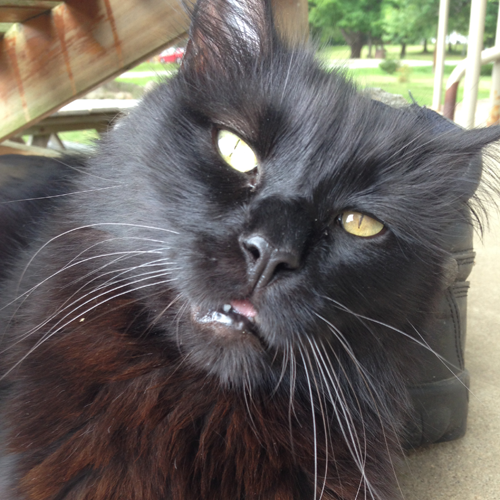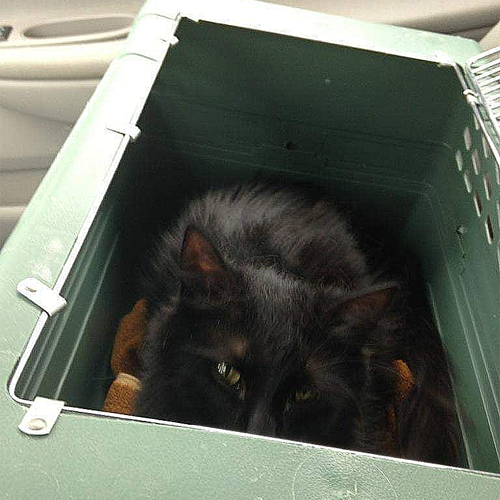Bifford’s “Crash Course”
When I brought Bifford home for the very first time as a “foster” I remember the moment very clearly — it was Tuesday May 13, 2014 and I had NO idea what to expect! I had NEVER had a “special needs” animal let alone a cerebellar hypoplasia cat I was asked by a local cat shelter to take him home for a bit because he was not thriving well getting bullied and beat up on at the shelter after being surrendered for the THIRD time (the first time the “family” was going on vacation and simply did not want to be bothered any longer, the second time was because he successfully used the litterbox but did not want to “cover it up” and the third and final time before he permanently adopted me was a couple who would lock him in an empty hot tub to “contain the mess” and allow him to “die with dignity” as documented on the surrender intake forms).
To say that I wanted to wrap the boy in bubble wrap and coddle him beyond belief would be an understatement. He wandered my one story, ranch style home aimlessly and cried all hours of the night. I was at my wits end and honestly felt like I was letting him down because he seemed so… displaced? Scared? Alone? I remember calling the cat shelter crying because I felt like I was letting him down and that maybe the shelter was a better environment for him then my home was.
At the insistence and pep-talk of the shelter they asked me to be patient and give it time and stressed to join some local CH forums for guidance and advice. Blogs and forums such as Kitty Cat Chronicles became my saving grace and honestly the gift that both Bifford and I needed to better understand one another.
Today I am that “cool mom” (well, I would like to THINK of myself as the cool mom. But who that is cool calls themselves “cool”) – do you remember those diaper commercials that document “mom of one child” (the stressed out, type “A” personality who looks overwhelmed) versus “mom of two kids” and the latter is always more calm, cool and collected in the face of chaos & adversity? It took some time but now I let Bifford BE Bifford. There truly is knowledge in letting kids (furry or otherwise!) fall, wipe out, crash and burn and allow them to get back up on their own without the coddling of their helicopter “smother” (smother + mother = “smother”) and I promise it will get better!
When I adopted Bifford (which occurred about five minutes after I took him home to foster him and instantly fell in love with the boy) I was navigating uncharted territories, attempting to haphazardly steer a storm I was unaware of all around.
If I could instill wisdom for new “CH pet parents” it would be this:
































- If you notice your new special baby stressed or overly anxious try to utilize the Feliway spray as well as try to get your baby into a “routine”. I noticed that Bifford enjoyed having a semi-structured routine (we woke him up from his “big boy room” and fed him breakfast, then we would let him play the day away with his brother and sisters then “mommy” would be home from work so he got snuggle time then it was dinnertime and then lounging with “mom and dad” before bedtime). I found that if anything derailed his routine in such a dramatic way he would freak out (and eventually that turned into stress cystitis, but that is a topic for another post!
- Schedule regular dental cleanings/examinations! I cannot tell you how many times when I first brought Bifford home would he sneeze a little too aggressively or be playing and “biff” it a little to hard and hurt his mouth or even chip a tooth! By having regular dental cleanings done I was able to address any injured teeth (injured= extremely painful).
- Construct a first aid kit for cats! This will come in handy if your little angel stumbles and falls or gets a “booboo” that may need a little attention when your veterinarian is closed (or you need to address and stabilize while en route to the veterinarian!)
- Invest in a low lip litter box! We actually made “BHOP” (Bifford’s House of Poop” which was a 13 gallon Rubbermaid container that Bifford’s “dad” cut a hole out on the bottom of one side (always use caution when using power/sharp tools!) This way Bifford could easily bobble into BHOP and do his absolute worse inside and there was no spillage or issue! He could also fall in it (or sometimes, play) without him knocking the entire thing over or causing any damage/injury!
- COMMUNICATION! When you adopt one of these special babies call your regular veterinarian right away (or send them a letter/postcard!) letting them know you adopted a specially abled pet (e-mail us if you would like our informational packet for veterinarians/veterinary staff) and if they have any questions (or maybe concerns) about these special babies. (Check out our map of veterinarians that are aware and understand these special kiddos here)
What are some useful tips/tricks that you were given (or found yourself while on your personal adventure!) that you would like to pass onto future specially-abled pet parents? Comment below!












